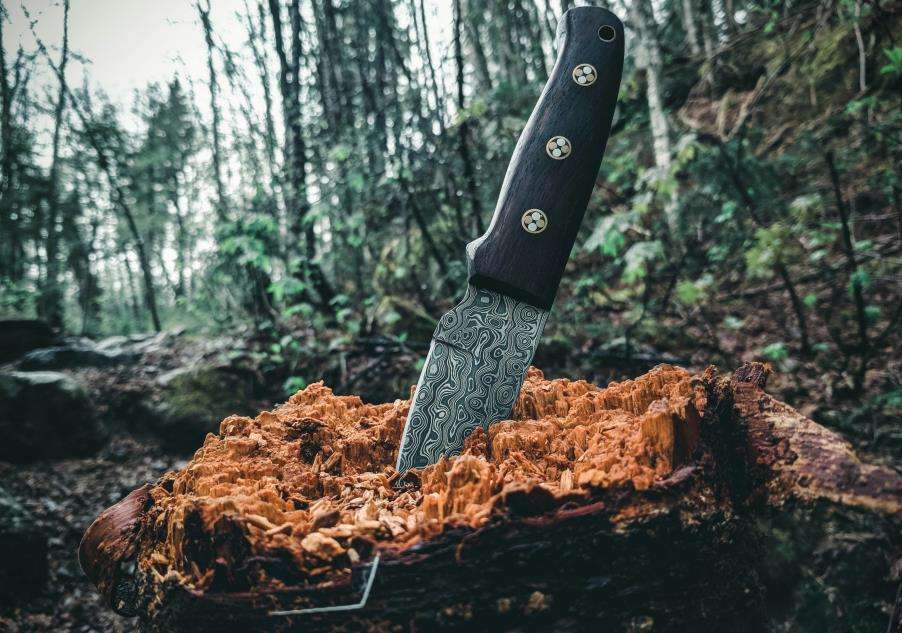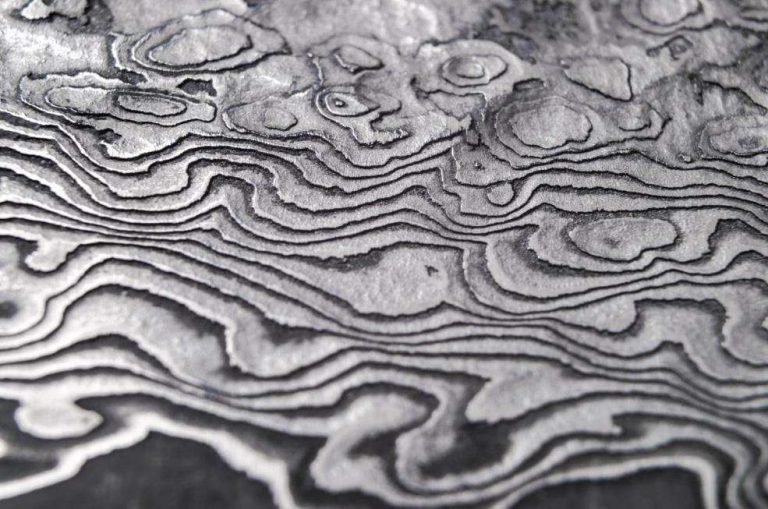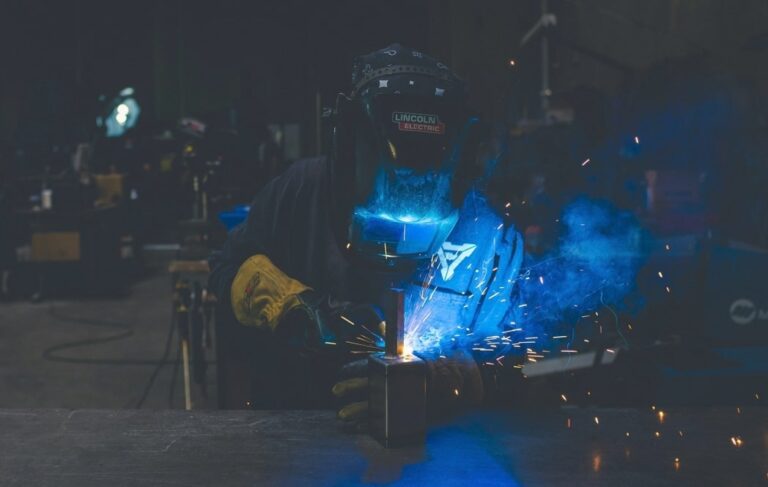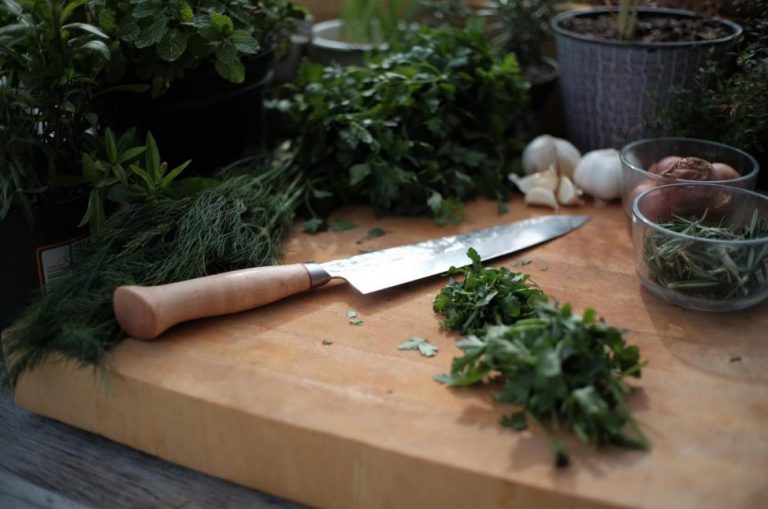Damascus steel produces a unique knife with striking patterns. It’s a material that knifemakers can’t furnish the same physical properties to a blade with another material.
However, what gives the patterns to Damascus steel knives happens as a result of forging, not that the steel already has it. There isn’t also a standalone process that makes the patterns appear on the blade. There is a multi-step process involving Damascus steel and ultimately making a knife.
While there is a specific manufacturing process for Damascus steel, it wasn’t always the same. The Damascus steel we have in our knives today and the daggers of the past are different.
Here is everything you need to know about making Damascus steel, including the known methods and materials of the past.
Damascus steel: original vs. modern

While many use the term Damascus steel interchangeably for both the original and modern steel with patterns, we must put a distinction between the two.
Damascus steel in the past
The Damascus steel knives of the past weren’t made from the same materials nor followed the same production methods.
The original Damascus steel is also called wootz steel or crucible steel, a type of high carbon steel used for forging swords and other blades. This steel was made by melting cast iron in a crucible. During manufacturing, wootz steel also required sand, glass, ash, bark, rice husks, leaves, and other fluxes to reduce impurities.
Damascus steel got its name from the exponential use of wootz steel in Damascus swords and traders seeing blacksmiths forging various blades.
That said, the original Damascus steel is the wootz steel. However, the Damascus steel knives you’ll find in the market aren’t made from this material.
Modern Damascus steel
Although there are modern renovations of the original wootz steel. The Damascus steel today in the market are actually pattern-welded steel. They are not a replicate of the original but a case of its own.
The manufacturing methods, the materials used, and the outcome of the patterns between the original and modern are different.
Pattern welded steel is manufactured by welding multiple steel billets in the forge, following twisting, hammering, pressing, and folding to create a homogenous material. The patterns appear because the nickel rich and depleted parts alternate, appearing in different colors when etched, similar to wootz steel.
Knifemakers can manipulate the forge welding process to have a desired pattern – more on that below.
How is pattern welded Damascus steel made?

Damascus steel we have today in the knife industry follows a manufacturing process called pattern-welding. This method refers to welding multiple steel blocks. The blacksmiths create a homogenous material from numerous steel pieces in the forge by folding, twisting, and hammering.
The steel manufactured following this technique is also referred to as pattern-welded steel.
Bringing two different steel billets to form a unified metal makes them reflect light differently. As a result, we get patterns unique to Damascus steel. Here are the steps to making Damascus steel, explained simply to give you more context.
- The steel blocks are brought together and heated in the forge. The blacksmith can start with just two and fold continuously to have four, eight, sixteen, thirty-two layers, and so on. There isn’t a minimum number of blocks.
- The second stage is folding, hammering, twisting, and stretching the hot steel. This process is crucial for making a homogenous material. It also determines how the patterns look in the end.
- Once the steel is ready, it undergoes quenching to harden it. The rest is the same as making a knife with any other steel.
Note that this process isn’t something blacksmiths came up with after trying to recreate the original Damascus steel. Pattern welding has been around before Damascus swords and daggers.
The early blacksmiths utilized various steel with different carbon amounts to make a complete blade. Steel that had ranging carbon contents enabled them to forge swords and weapons with good hardness and strength.
There are pattern-welded swords dating back to the first millennium BC made by Celtic and Germanic people, making them much older than Damascus steel blades.
Acid etching
After making a knife with Damascus steel, the patterns don’t become perceptible immediately. The knifemaker needs to acid etch the blade. It’s often the final stage of making a Damascus steel knife.
The process is simple. The knifemaker submerges the blade in acid – usually ferric chloride or muriatic acid – and the chemical reaction makes the patterns visible.
The acid etching process can take place before or after the knifemaker polishes the blade. If it takes place after polishing the blade, the patterns remain on the cutting edge and spine.
Faking the patterns on these parts of a blade is next to impossible for manufacturers with bad intentions. Take this to your advantage when verifying the authenticity of a Damascus steel knife.
How do different Damascus steel patterns form?
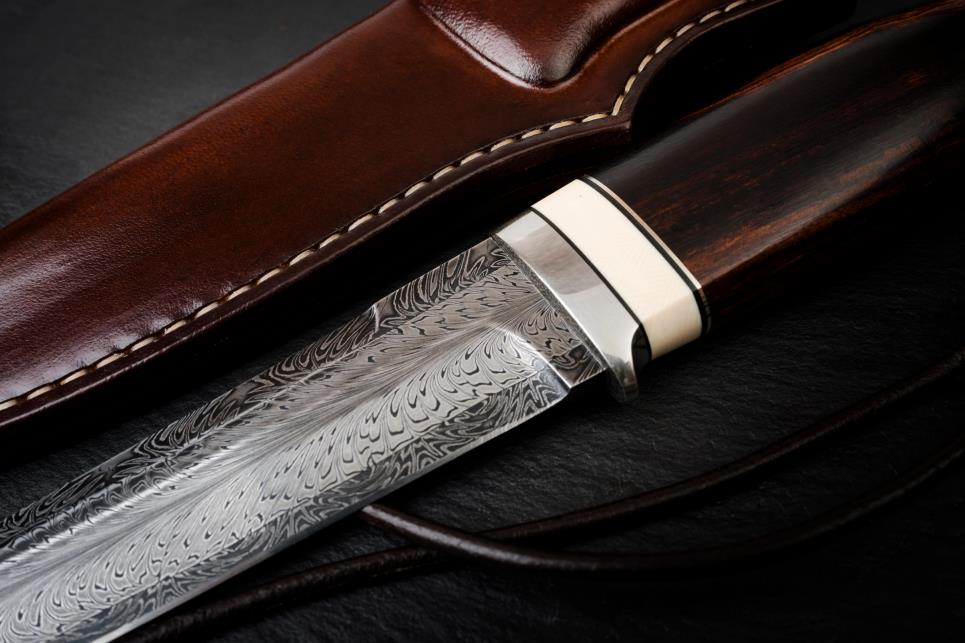
As mentioned, how the pieces are welded in the forge plays a role in the outcome of the patterns. The blacksmith can utilize different forge welding techniques for a specific style.
Since there are only so many variations a blacksmith can do, there are expected outcomes. Some of the popular patterns are feathered, ladder, and raindrop Damascus. Each follows a certain process by the knifemaker. Here is an example of how specific Damascus patterns form.
For feathered Damascus pattern, the knifemaker forge welds ten to fifteen billets and lets them cool. The steel is then cut in half, and the process is repeated. The result is a blade with small, individual lines connecting to a straight line in the middle, resembling a feather.
This is one of many Damascus patterns. There are countless others – learn more about different Damascus patterns from this article.
How does pattern welding change steel properties?
The types of steel used for pattern welding don’t impact an individual steel’s properties. The pattern welding process turns different steel into a homogenous material. Therefore, it gives the blade the properties of both steels.
There isn’t a significant change in the properties of the individual steel, but pattern welding often leads to a more robust material for knife making.
In the past, blacksmiths utilized the pattern welding technique to make a better blade than they could with single steel. They would stack steel with different carbon contents. This enabled them to produce a metal with a fine balance between hardness and strength.
In modern knifemaking, pattern welding steel only has decorative applications. However, the materials used for Damascus steel are often very high quality. Due to this, they produce a superior material to many other options.
The quality materials, multiple manufacturing processes, and artisanship make Damascus steel knives a prized possession of any knife lover. Although these also make them expensive, the physical properties of Damascus steel can’t be found in any mono steel.
Don’t let the price of Damascus steel knives make you think before starting to sell them, though. As long as you have a following willing to pay more than the average person, you’ll find success selling them.
If you can’t decide whether selling Damascus steel knives is too much for your store at the moment, here is more to help you decide.
Should you sell Damascus steel knives?

Damascus steel produces a blade that’s not for everyone. An average user, a home cook, or someone looking for a simple product to get the job done isn’t likely to turn to them. The pricing will be intimidating, the patterns won’t mean as much, and ultimately you won’t be able to sell them.
The knives made from this extraordinary steel are more preferred by professionals and those who appreciate the beauty of the patterns – people who like knives or use them for their profession.
If a good number of people walk into your store or visit your online shop made up of this profile, you should include at least a few selections of Damascus steel knives.
Buy Wholesale Knives and Start Scaling up with Us Today
Contact us and connect with a sales rep to get a free quote.
Pros of selling
- With exceptional aesthetics, the beauty of Damascus steel will pull people into your store like a magnet.
- Damascus steel knives are made from high-quality materials. This reflects on the product performance users get from it.
- Pattern welding can make a stronger knife overall if done properly. This adds to the strength of Damascus steel knives, making them less prone to chipping and other damage.
Cons of selling
- Damascus steel knives are far from inexpensive. They might stretch the budget of your customers.
- Although this isn’t exactly a con, depending on the manufacturer, the cutting edge of a Damascus steel knife can have an unstable performance.
When selecting a product to sell, you might not be able to find enough information about it. Always source the products from manufacturers that identify the steels used for the Damascus steel.
Sourcing Damascus knives
Selling any product starts with sourcing them first. We can supply you with a wide range of Damascus steel products at an affordable price.
You can order all-purpose kitchen knives, like Santoku, Gyuto, and chef’s knife, or specialized cutlery, such as Yanagiba, Nakiri, and bread knives.
Our services can help you, especially if you’ve sold Damascus steel knives before but didn’t see their contribution to revenue. Browse our Damascus steel knife catalog from here.
LeeKnives is proud to offer low minimum order quantities compared to its competition at fair prices and global shipping. Click here to request a quote now.
